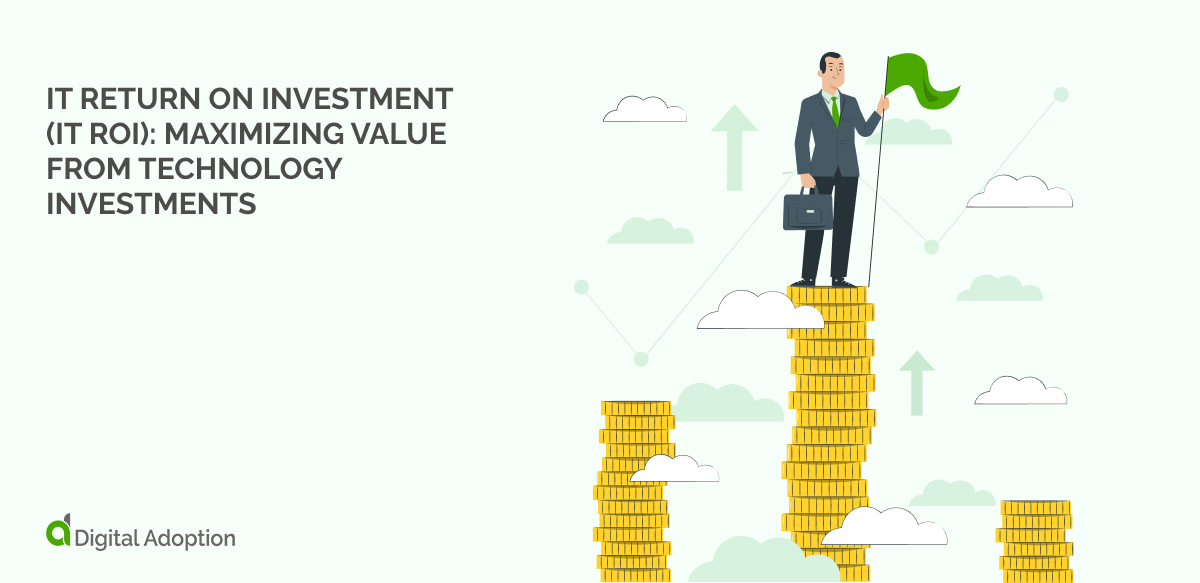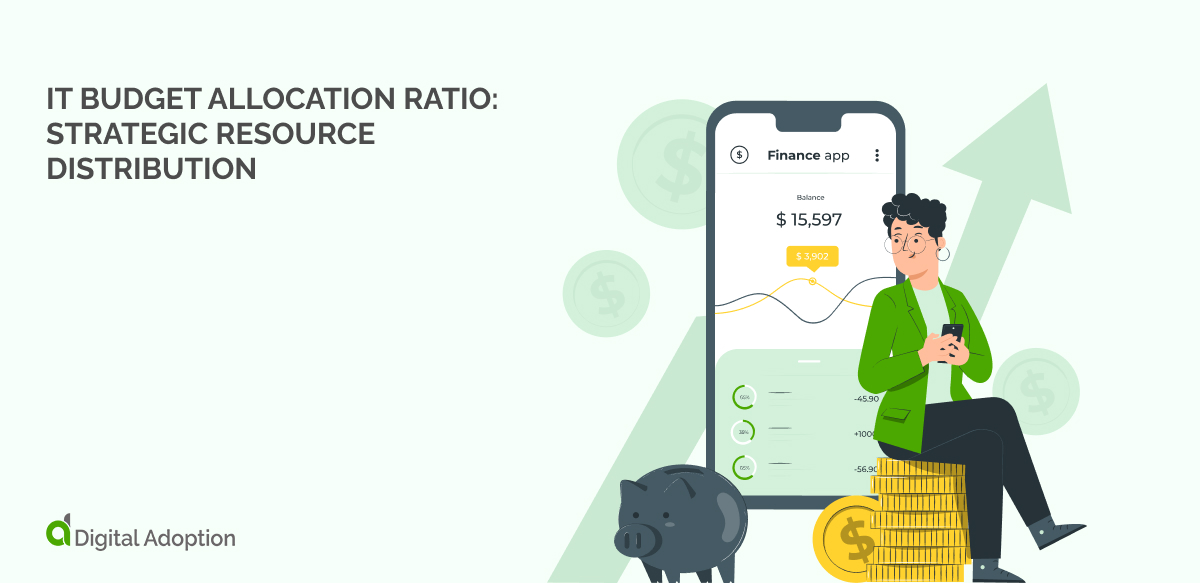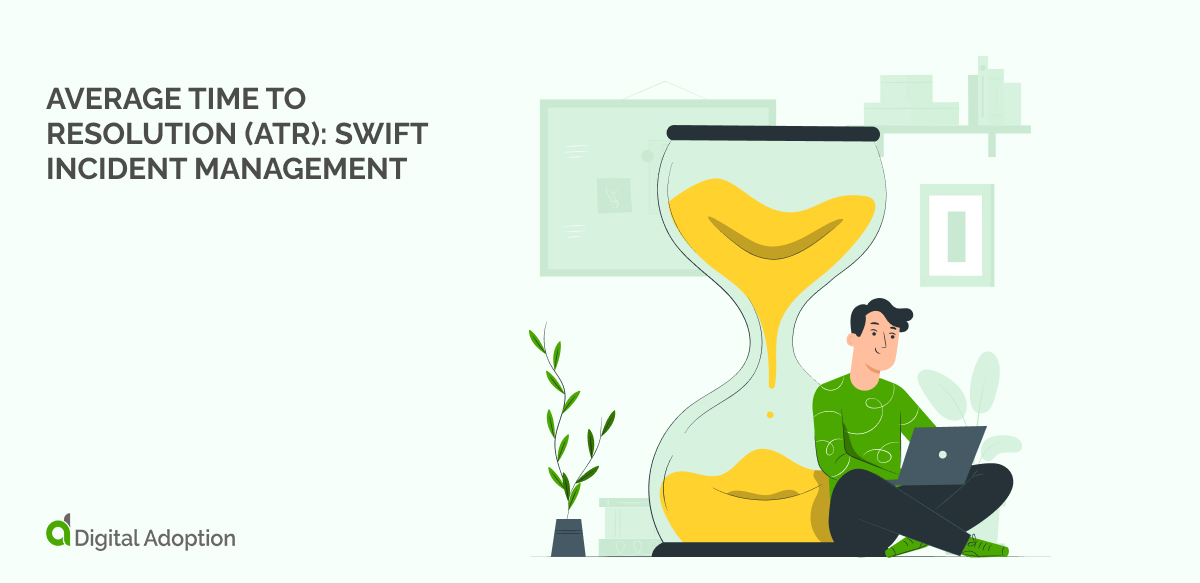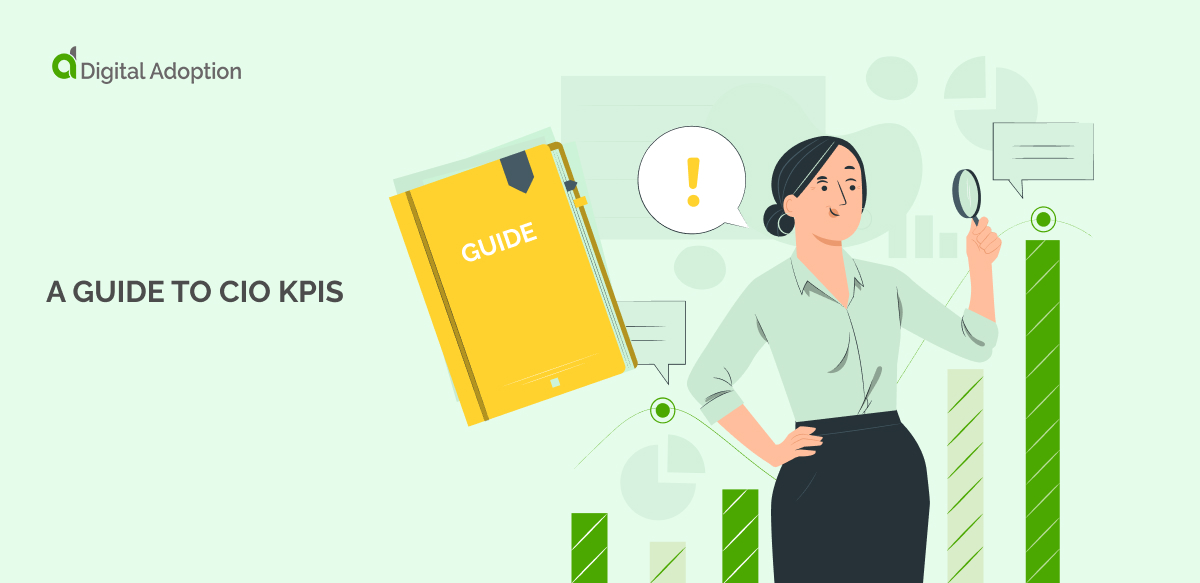CIO Key Performance Indicators (KPIs) play a crucial role in measuring the effectiveness and success of Chief Information Officers (CIOs) in their strategic planning and management of information technology within organizations.
These KPIs provide valuable insights into financial performance, operational resilience, risk management, service delivery, innovation, and other key areas.
To ensure CIOs are well-informed, please find an overview of the most critical Key Performance Indicators (KPIs) discussed in this article.
- IT Return on Investment (IT ROI)
- IT Cost-to-Revenue Ratio
- IT Budget Allocation Ratio
- System Uptime Rate
- Average Time to Resolution (ATR)
- Application Development Lead Time
- Change Request Fulfillment Rate
- IT Staff Retention Rate
- Percentage of IT Projects Completed on Schedule
- IT Incidents per Employee Ratio
- IT Service Level Agreement (SLA) Compliance Rate
- IT Infrastructure Capacity Utilization Rate
- Number of Data Breach Incidents
- IT Vendor Performance Evaluation
- Percentage of IT Projects Achieving Business Objectives
This article explores the role of CIO Key Performance Indicators (KPIs) in driving organizational success. CIOs can optimize team performance, align with business goals, and deliver maximum value by measuring the right metrics.
We provide insights on impactful KPIs for CIOs to track, empowering them to establish a strong foundation for growth in today’s technology-driven era.
Why are CIO KPIs important?
CIO Key Performance Indicators (KPIs) are instrumental in assessing and guiding the IT function within any organization.
They provide a quantifiable measure of performance, enabling CIOs to evaluate the effectiveness of their strategies, make informed decisions, and communicate their department’s value to other stakeholders.
One significant reason for the importance of CIO KPIs is their role in strategic planning and alignment. They ensure that the IT department’s goals coincide with its broader objectives.
Tracking KPIs, such as the percentage of IT projects that meet business objectives or the rate of tech buying in relation to revenue, enables CIOs to illustrate their department’s contribution to the overarching business strategy.
CIO Key Performance Indicators (KPIs) are invaluable in promoting operational efficiency. The tracking of system uptime, incident response time, and first-call resolution rates offers a comprehensive insight into the IT infrastructure’s dependability and the support team’s proficiency. These Key Performance Indicators (KPIs) are crucial in identifying bottlenecks facilitating productivity and cost reduction improvements.
In addition to operational efficiency, CIO KPIs are instrumental in managing risk. They monitor the organization’s security posture by tracking the number of security breaches, the time taken to detect threats, and compliance levels. This information is vital for risk mitigation and ensuring uninterrupted business operations.
CIO KPIs are more than just a measurement tool; they are vital to IT governance. They provide visibility into the IT department’s performance, align IT with business strategy, enhance operational efficiency, manage risks, and spur innovation. Therefore, they are indispensable for any CIO aiming to deliver value and drive business growth.
Oversight in these areas can cause irreparable harm to a businesses operations, especially that concerning Cybersecurity, which remains a major pain point for CIOs. The average cost of a data breach is estimated to be $4.24 million, according to the IBM Security Cost of a Data Breach Report 2021.
15 KPIs every CIO needs to keep track of
In the dynamic world of IT, Key Performance Indicators (KPIs) serve as vital navigational tools for Chief Information Officers (CIOs).
They provide a quantifiable measure of progress and success while highlighting areas requiring attention or improvement. Tracking the right KPIs can empower CIOs to make informed decisions, optimize performance, and drive strategic goals.
In this context, we present 15 crucial KPIs that every CIO should diligently monitor to steer their organization toward sustained growth and innovation:
-
IT Return on Investment (IT ROI): Maximizing Value from Technology Investments

The IT Return on Investment (IT ROI) is a critical metric that evaluates the value generated from technology investments. CIOs analyze the net profit or loss caused by an IT project in relation to its cost to determine the effectiveness of the investment.
To maximize IT ROI, CIOs align technology investments with business objectives, conduct thorough cost-benefit analyses, and monitor project outcomes. By ensuring that IT initiatives contribute to revenue growth, cost savings, or operational efficiencies, CIOs can drive tangible value for the organization.
Through strategic decision-making, robust project management, and continuous evaluation, CIOs optimize IT ROI, enabling the organization to compete in high-octane business ecospheres.
-
IT Cost-to-Revenue Ratio: Balancing Financial Efficiency
The IT Cost-to-Revenue Ratio is a key KPI that measures the proportion of total IT costs to the revenue generated by the organization. CIOs leverage this ratio to assess the financial efficiency of IT operations.
CIOs focus on optimizing the IT Cost-to-Revenue Ratio by implementing cost-effective measures, such as leveraging cloud solutions, streamlining processes, and rationalizing IT infrastructure. CIOs balance cost and revenue by reducing unnecessary expenditures and maximizing revenue generation, ensuring optimal financial efficiency.
Through meticulous cost management, resource optimization, and strategic decision-making, CIOs drive down costs while maintaining or increasing revenue, ultimately enhancing the organization’s profitability.
-
IT Budget Allocation Ratio: Strategic Resource Distribution

The IT Budget Allocation Ratio measures how financial resources are distributed across different IT initiatives within an organization. CIOs leverage this KPI to allocate budgets strategically, aligning with business priorities and goals.
Analyzing the IT Budget Allocation Ratio empowers CIOs to pinpoint areas requiring budget reallocation. This insight allows them to assign priority to crucial projects, distribute resources effectively, and guarantee that technology investments yield optimum value.
CIOs employ data-driven decision-making, collaborate closely with business stakeholders, and assess the potential impact of each initiative on overall organizational objectives. Optimizing IT budget allocation allows CIOs to stimulate innovation, propel digital transformation, and efficiently facilitate the organization’s achievement of its strategic goals.
-
System Uptime Rate: Ensuring Continuous Operations
The System Uptime Rate is a crucial KPI that measures the percentage of time IT systems are operational and available for users. CIOs prioritize maintaining a high System Uptime Rate to ensure continuous operations and minimize disruptions.
To achieve a high System Uptime Rate, CIOs implement robust infrastructure, proactive monitoring, redundancy measures, and disaster recovery plans. By closely monitoring this KPI, CIOs identify potential vulnerabilities, mitigate risks, and ensure business continuity.
Investment in dependable technology, the implementation of best practices, and constant improvement of system uptime empower CIOs to boost customer discovery. These actions also facilitate smooth business processes and uphold a competitive edge in the market.
-
Average Time to Resolution (ATR): Swift Incident Management

The Average Time to Resolution (ATR) is a critical KPI measuring the average time to resolve IT incidents. CIOs aim to minimize ATR to ensure prompt incident resolution, minimize disruptions, and maintain productivity.
To reduce ATR, CIOs should focus on implementing efficient incident management processes, leveraging automation and self-service options, and providing comprehensive training to IT support teams. Continuous improvement of incident response capabilities and meticulous monitoring of Average Time to Resolution (ATR) enable CIOs to elevate the efficiency of IT service delivery. They also contribute to user satisfaction enhancement and optimal resource utilization.
Swift incident resolution minimizes downtime and enhances the organization’s overall operational effectiveness, allowing employees to focus on their core responsibilities and drive business growth.
-
Application Development Lead Time: Accelerating Speed and Efficiency
The Application Development Lead Time is a crucial KPI that measures the time taken from ideation to deployment of applications.
CIOs focus on reducing the Application Development Lead Time by implementing agile development methodologies, automation tools, and continuous integration practices. CIOs can expedite application delivery by streamlining the development process, eliminating bottlenecks, and promoting cross-functional collaboration.
CIOs enhance innovation, promote responsiveness, and drive competitive advantage by optimizing lead time. Faster application development enables organizations to adapt swiftly to changing customer needs and market dynamics, ultimately ensuring business growth and success.
-
Change Request Fulfilment Rate: Efficiently Managing Change Requests

As businesses evolve, change requests become a regular occurrence. The Change Request Fulfillment Rate is a KPI that measures the efficiency of handling these requests.
CIOs closely monitor this rate and implement streamlined change management processes to ensure timely and accurate fulfillment of change requests. CIOs minimize disruptions and maintain operational stability by establishing clear communication channels, efficient workflows, and effective change control mechanisms.
Efficient change request management enhances organizational agility and adaptability, allowing businesses to respond to evolving requirements effectively. By prioritizing change management practices, CIOs enable smooth transitions, foster innovation, and drive continuous organizational improvement.
-
IT Staff Retention Rate: Nurturing a Talented and Engaged Workforce
Retaining skilled IT professionals is crucial for the success of any organization. The IT Staff Retention Rate is a KPI that measures an organization’s ability to maintain its IT talent.
CIOs should maintain a high IT Staff Retention Rate to ensure continuity, knowledge retention, and organizational stability. CIOs create an environment that attracts and retains top talent by implementing employee engagement initiatives, professional development programs, and competitive compensation packages.
Maintaining a high staff retention rate is instrumental in fostering innovation, boosting productivity, and fortifying an organization’s capabilities. When CIOs cultivate a talented and engaged IT workforce, they lay the foundation for a culture of collaboration and excellence, which paves the way for sustained success and growth.
-
Percentage of IT Projects Completed on Schedule: Timely and Efficient Project Delivery

The Percentage of IT Projects Completed on Schedule is a KPI that measures project efficiency.
CIOs monitor this percentage to ensure projects are completed within the allocated time. CIOs can optimize project timelines and minimize delays by implementing robust project management frameworks, resource allocation strategies, and proactive risk mitigation measures.
Consistently delivering projects on schedule is a testament to a CIO’s ability to effectively meet business objectives and achieve desired outcomes. It not only amps up customer satisfaction but also optimizes resource utilization, thereby driving overall organizational success. Timely project completion, therefore, plays a pivotal role in the trajectory of an organization.
-
IT Incidents per Employee Ratio: Enhancing Operational Stability
The IT Incidents per Employee Ratio is a KPI that measures the number of IT incidents reported per employee within a specific time frame. CIOs monitor this ratio to assess the effectiveness of their IT support processes and the overall stability of IT operations.
CIOs aim to minimize the IT Incidents per Employee Ratio by implementing proactive monitoring systems, improving infrastructure resilience, and conducting thorough root cause analyses. CIOs can enhance operational stability, reduce incidents, and minimize disruptions when pinpointing and tackling underlying issues. This proactive approach to problem-solving is critical for maintaining a smooth, efficient operation.
Through effective incident management practices, comprehensive training programs, and continuous improvement initiatives, CIOs optimize the IT Incidents per Employee Ratio. A lower ratio indicates higher IT service quality, increased user satisfaction, and improved productivity across the organization.
-
IT Service Level Agreement (SLA) Compliance Rate: Meeting Service Levels
IT Service Level Agreements (SLAs) define the expected levels of service delivery between IT and business stakeholders. The IT Service Level Agreement Compliance Rate is a KPI that measures the extent to which these SLAs are met.
CIOs actively monitor the IT SLA Compliance Rate to ensure that IT services align with agreed-upon standards. By establishing robust SLA monitoring mechanisms, implementing service improvement initiatives, and fostering strong relationships with internal and external stakeholders, CIOs strive to achieve high compliance rates.
Meeting SLAs demonstrates the organization’s commitment to delivering reliable and efficient IT services. By maintaining a high IT SLA Compliance Rate, CIOs enhance customer satisfaction, build trust, and reinforce the IT department’s reputation as a reliable partner in driving business success.
-
IT Infrastructure Capacity Utilization Rate: Optimizing Resource Usage
The IT Infrastructure Capacity Utilization Rate is a KPI that measures the extent to which IT infrastructure resources are utilized effectively.
CIOs analyze this ratio to identify underutilized or overutilized resources and make informed decisions regarding resource allocation, scalability, and investment planning. CIOs reduce unnecessary expenses, ensure optimal performance, and enhance operational agility by optimizing capacity utilization.
CIOs can achieve an optimal IT Infrastructure Capacity Utilization Rate through regular monitoring, proactive capacity planning, and leveraging technologies such as virtualization and cloud computing. This allows organizations to scale dynamically, respond to changing demands, and maximize the value derived from IT infrastructure investments.
-
Number of Data Breach Incidents: Safeguarding Data Security

Data breaches pose significant risks to organizations, including financial loss, reputational damage, and legal implications. The Number of Data Breach Incidents is a KPI that measures the frequency of data breaches within an organization.
CIOs prioritize data security by implementing robust cybersecurity measures, conducting regular vulnerability assessments, and promoting a strong security culture. CIOs can identify vulnerabilities, mitigate risks, and promptly respond to incidents by closely monitoring the Number of Data Breach Incidents.
Efficient data breach management protects sensitive information, maintains customer trust, and ensures compliance with data protection regulations. CIOs safeguard the organization’s assets, reputation, and overall business continuity by reducing the number of data breach incidents.
-
IT Vendor Performance Evaluation: Assessing Vendor Partnerships
Effective IT vendor management is crucial for successful IT operations. The IT Vendor Performance Evaluation is a KPI that measures IT vendors’ performance and ability to meet contractual obligations.
CIOs regularly assess vendor performance based on key criteria such as service quality, responsiveness, SLA adherence, and cost-effectiveness. By evaluating vendor performance, CIOs can identify areas for improvement, renegotiate contracts, or explore alternative vendor partnerships.
Through proactive vendor management, CIOs ensure vendors deliver value, align with organizational goals, and meet business requirements. By fostering strong relationships with vendors, CIOs enhance collaboration, drive innovation, and optimize the overall effectiveness of IT vendor partnerships.
-
Percentage of IT Projects Achieving Business Objectives: Delivering Strategic Value
The success of IT projects is determined by their ability to achieve desired business objectives. The Percentage of IT Projects Achieving Business Objectives is a KPI that measures the alignment between IT initiatives and organizational goals.
CIOs closely monitor this percentage to ensure that IT projects deliver strategic value and contribute to the organization’s success. By conducting thorough project planning, stakeholder engagement, and continuous evaluation, CIOs can increase the likelihood of IT projects achieving their intended outcomes.
By delivering IT projects that align with business objectives, CIOs demonstrate the value of technology in driving organizational growth, innovation, and competitive advantage. This KPI reflects the effectiveness of IT governance, project management practices, and the ability to leverage technology as an enabler of business success.
Empowering IT Success with CIO KPIs
Chief Information Officer (CIO) Key Performance Indicators (KPIs) serve as instrumental yardsticks in gauging the efficacy and accomplishments of IT divisions within contemporary corporate structures.
These pivotal metrics empower CIOs to make enlightened decisions about resource allocation, IT asset management, and enhancing their department’s comprehensive efficiency.
The dynamic nature of technology necessitates that CIOs consistently revise and modify these KPIs. This ensures they remain true reflections of the ever-evolving tech landscape and stay in sync with their organization’s strategic objectives. Vigilant observation and assessment of these quantifiable values can steer IT departments on a path toward innovation, nimbleness, and preeminence.
The employment of these robust measurement tools allows CIOs to wield significant influence on their IT department’s performance, thus creating an environment conducive to growth and innovation.
As a result, this plays a pivotal role in propelling the entire organization towards its ultimate success. The cascading impact of these measures emphasizes the importance of CIO KPIs in charting an organization’s path in our progressively digital world.













